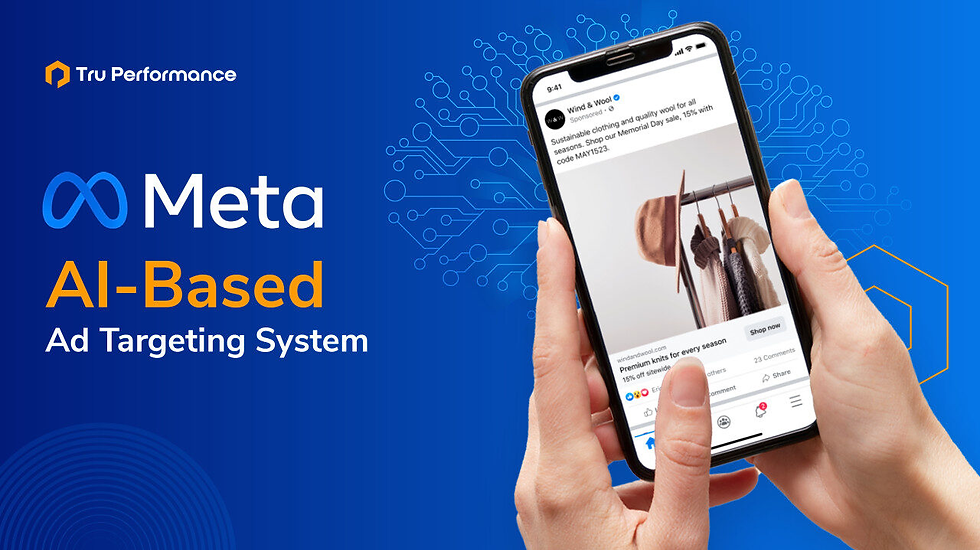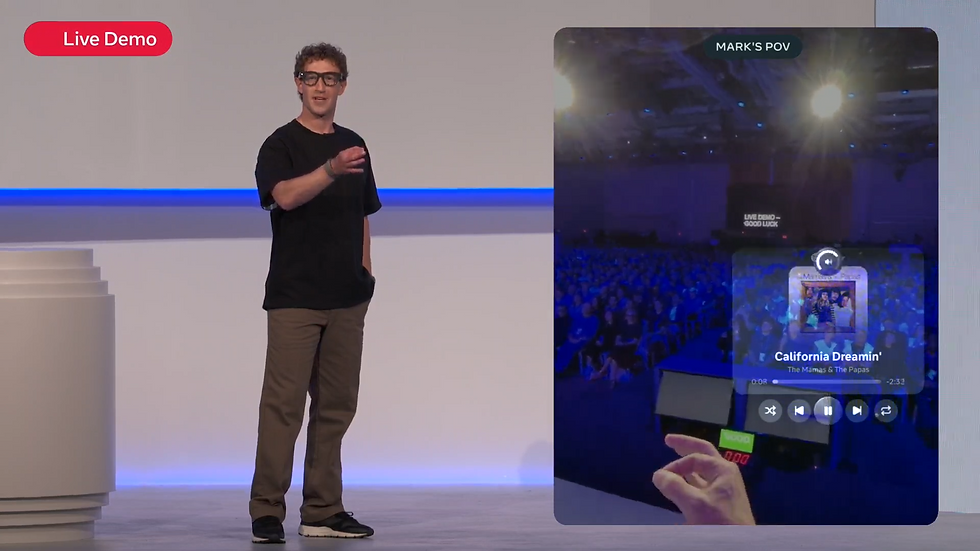How Meta Uses AI Chat Data to Power Next-Gen Targeted Advertising: What You Need to Know
- Olivia Johnson

- Oct 3
- 5 min read

Introduction
Meta, the social media titan behind Facebook and Instagram, is rolling out a significant update to its privacy policy by December 16, 2025. This update enables Meta to use data gathered from user interactions with its AI products—like AI chatbots and smart glasses—to refine and enhance targeted advertising across its platforms. This shift represents a pivotal moment in the monetization of AI technology, weaving conversational data into the fabric of personalized ads. But what does this mean for users, privacy, and the future of AI-powered advertising? This article delves into the core of Meta’s new advertising strategy, offering a clear, expert perspective on its workings, implications, and evolving landscape.
What Exactly Is Meta’s AI-Powered Targeted Advertising?

Core Definition and Common Misconceptions
At its core, Meta’s AI-powered targeted advertising uses data from interactions between users and Meta’s AI tools—such as AI chatbots, voice-activated features in Ray-Ban Meta smart glasses, AI video feeds, and image generation applications—to build more detailed user profiles. These enriched profiles allow advertisers to deliver hyper-personalized ads tailored not just to demographic data but to the content and themes discussed in AI conversations.
A common misconception is that this data use invades sensitive private conversations indiscriminately. However, Meta explicitly excludes conversations around sensitive topics like religion, sexual orientation, political views, health, ethnicity, and union membership from ad targeting, striving to maintain some privacy boundaries while leveraging AI data for advertising effectiveness.
Why Is Meta’s AI Data Use in Advertising So Important?

Its Impact and Value
Meta’s reliance on user data for advertising has long been central to its business model. Traditionally, Facebook and Instagram have used demographic, behavioral, and social data to offer advertisers access to niche audiences. The introduction of AI chat data amplifies this by providing richer, more dynamic insights from the actual content users discuss with AI.
This data creates a new advertising “signal” reflecting user interests and intents with greater accuracy. For example, a user discussing hiking with Meta’s AI chatbot could see ads for hiking gear, enhancing ad relevance and engagement. As more than a billion users engage in conversations with Meta AI monthly, this is a massive trove of real-time behavioral data unavailable before, promising to significantly boost ad targeting precision and effectiveness.
The Evolution of Meta’s Advertising Strategy: From Past to Present

Meta’s advertising journey began with simple demographic targeting on Facebook, evolving into sophisticated machine learning models analyzing user interactions and preferences. The current shift leverages AI conversational data—an innovation that took shape as Meta invested heavily in AI chatbots and smart wearable devices.
Initially offering AI tools for free to build a user base, Meta is now pivoting to monetize these interactions indirectly by feeding the AI-generated behavioral data into its ad-targeting algorithms. This evolution mirrors wider industry trends where AI products, once experimental and free, are increasingly integrated into revenue-generating models.
How Meta’s AI Chat Data Works for Targeted Ads: A Step-by-Step Reveal

User Interaction with AI
Users chat with Meta’s AI chatbot or use AI-enabled features in devices like Ray-Ban Meta smart glasses. These conversations and AI-analyzed content (including voice, images, video) generate detailed user behavior data.
Data Collection and Profiling
Meta collects these AI interaction data points and integrates them into existing user profiles that already contain demographic and behavioral data.
Exclusion of Sensitive Topics
Conversations involving sensitive personal topics are filtered out to prevent being used in advertising targeting.
Ad Delivery
Advertisers gain access to enhanced targeting options based on AI chat topics and interests. For example, users who chat about hiking receive hiking-related ads, improving ad relevance and user engagement.
Cross-Platform Consistency
Data influences ads only if users are logged into the same Meta account across products like Facebook and Instagram.
How to Understand and Manage Meta’s AI Data Use in Real Life

Users should be aware that interactions with Meta’s AI products now contribute to ad targeting, with no current opt-out available. Privacy policy updates will notify users soon, but the ability to refuse data usage for advertising is not provided.
To manage impact:
Users should consider limiting sensitive conversations on Meta’s AI platforms to protect personal data.
Be aware that AI-generated ad targeting applies globally, except in regions with stricter privacy laws like the EU, UK, and South Korea.
Maintain vigilance about the permissions granted to AI applications, particularly with smart glasses and multimedia data collection.
The Future of Meta AI Data for Advertising: Opportunities and Challenges
Meta’s strategy highlights broader industry trends where AI interactions are central to new revenue streams. Future possibilities include:
Enhanced Personalization
Leveraging AI chat insights can make ads more relevant, improving advertiser ROI and user experience when done responsibly.
Integration of Multimodal Data
Combining voice, image, video AI data could create even richer profiles for advertisers.
New Monetization Models
Beyond ads, Meta and others may explore transactional AI commerce, as OpenAI does with ChatGPT shopping features and Google with AI-powered search ads.
Challenges loom large:
Privacy Concerns
Using AI chat data raises significant questions on consent, transparency, and data protection, especially across varying global regulations.
User Trust
Balancing monetization and user privacy is crucial; perceived invasiveness may erode trust and user engagement.
Ethical Boundaries
Defining what data is appropriate for ad targeting remains complex, especially for sensitive AI conversations. Meta’s exclusion of sensitive topics is a step, but ongoing vigilance is needed.
Conclusion: Key Takeaways on Meta’s AI Data in Targeted Advertising

Meta’s new privacy policy and AI data use mark a major turning point in how social media platforms monetize AI-powered interactions. By integrating AI chatbot and device interaction data into ad targeting, Meta is enhancing the precision of its advertising engine, potentially improving user relevance and business outcomes. However, this comes at the cost of increased data surveillance, with limited user control over data use. The move reflects broader AI monetization trends but also demands careful navigation of privacy, ethics, and regulatory landscapes.
Frequently Asked Questions (FAQ) about Meta AI Data and Targeted Advertising
1. What is Meta’s AI-powered targeted advertising?
It’s the use of data from user interactions with Meta’s AI products—like chatbots and AI-enabled devices—to improve personalized ad targeting on Facebook and Instagram.
2. Can I opt out of having my AI chat data used for ads?
Currently, Meta does not provide an opt-out option for users whose AI interaction data are used in targeted advertising.
3. How does Meta protect sensitive information in AI chats?
Meta excludes data from conversations about sensitive topics such as religion, sexual orientation, political views, and health from being used in ads to safeguard user privacy.
4. Will AI chat data impact ads if I’m not logged in to Facebook or Instagram?
No, AI chat data only influence ads on Facebook and Instagram if the user is logged into the same account across those products.
5. What does the future hold for AI data use in advertising?
We can expect more personalized ad experiences powered by multimodal AI data and new monetization models, alongside ongoing privacy and ethical challenges to address.


